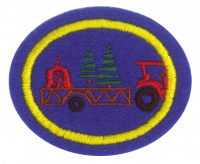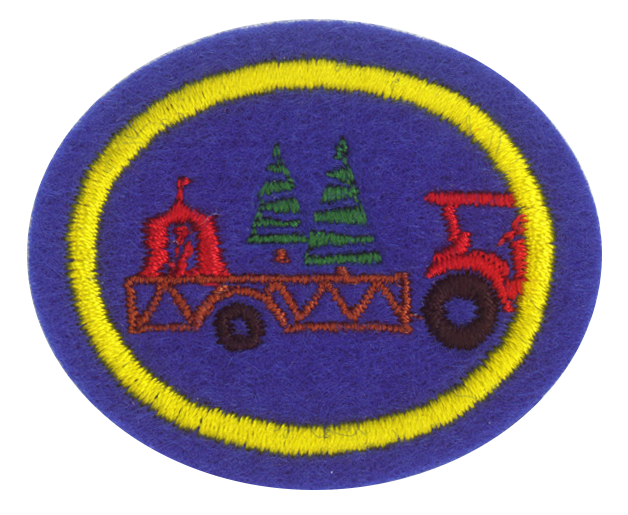Difference between revisions of "AY Honors/Parade Floats/Answer Key"
m |
m |
||
| Line 1: | Line 1: | ||
{{HonorSubpage}} | {{HonorSubpage}} | ||
| − | <section begin="Body" /> | + | <section begin="Body" /> |
{{ansreq|page={{#titleparts:{{PAGENAME}}|2|1}}|num=1}} | {{ansreq|page={{#titleparts:{{PAGENAME}}|2|1}}|num=1}} | ||
<noinclude><translate><!--T:24--> | <noinclude><translate><!--T:24--> | ||
| Line 169: | Line 169: | ||
[[Category:Instructor Required{{GetLangSuffix}}|{{SUBPAGENAME}}]] | [[Category:Instructor Required{{GetLangSuffix}}|{{SUBPAGENAME}}]] | ||
| − | |||
{{CloseHonorPage}} | {{CloseHonorPage}} | ||
Latest revision as of 21:30, 1 January 2023
1
The official requirements lack a list of safety rules. However, Requirement 2 in the Parade Floats - Advanced Honor is more specific.
Note: Risk Management (adventistrisk.com) has guidelines listed on their website concerning safety management.
Ladders
Any ladder purchase in the past 20 years or so will be covered with warning labels. Read them. In general, they will say the following:
- Do not climb a ladder unless it is stable, steady, and all its legs are on solid ground.
- The second highest step (of a step ladder) will be labelled with a warning that says Do not stand on or above this step. Heed that warning.
- Keep your weight centered between the ladder's upright rails. This means you should not lean out away from the ladder to either side. If you can't reach something without leaning out, get off the ladder and move it. Yes, it's inconvenient, but so are ambulance trips and broken bones.
- Be sure a step ladder's braces are locked.
- Do not climb the back of a step ladder, or stand on the paint/tool holder.
- Keep the steps dry and clean.
- Wear slip-resistant shoes.
- Keep aluminum ladders away from electrical wires.
- Set a ladder up at the proper angle. If too steep, it could fall backward with you on it, or you could fall off. If too shallow, it may not be able to hold your weight without breaking, or it could slip out from under you. Ladders are usually marked with angles of proper use.
Hand tools
Knives
- Keep your blades sharp. A dull knife is difficult to push through wood, requiring additional force. When the wood finally gives, the blade keeps going.
- Always push the blade away from you, and constantly consider where the blade will go.
- Keep your fingers clear of the blade at all times.
- When splitting wood with a knife, do not hammer on the back of the blade. This weakens the attachment to the handle and deforms the blade.
- Close a pocket knife when it's not in use or when you are carrying it.
- Keep all blades away from heat. Heat will remove the temper, softening the blade. A soft blade will not hold an edge, making it nearly impossible to keep it sharp.
Power equipment
- Use tools as intended and only if properly trained in their use
- Use safety gear (gloves, eye protection, long sleeves) when doing anything potentially dangerous
Other
- Float trailers or trucks are designed to move, so check that everyone is safe before moving the float
- Properly block a float trailer so it does not shift while being turned into a float
Can you think of other safety rules?
2
- Lumber
- Plywood
- Wallboard
- Cloth
- Carpet
- Floral Sheeting
- Foil
- Plants (flowers, boughs, nuts, etc.)
- Christmas lights
- Spot Lights
- Generators
- Motors
3
3a
- Brainstorming
- Design begins with a brainstorming session. This is when everyone in the group blurts out ideas about how the float could look. all the ideas are written down on a whiteboard where everyone can see, and none of the ideas are criticized or dismissed, no matter how ludicrous. if criticism begins during this phase, people will be less expressive. Crazy ideas have a way of sparking sane ideas in others, so you will want to encourage that sort of thinking.
- Select a Design
- Once the brainstorming has run its course, the group should look at all the ideas that have been suggested. This is when the crazy ideas are eliminated. People will by this time have thought more about the ideas that have been presented, and a handful of favorites may stand out. Which of these are actually doable? Once the ideas have been winnowed down to a few, see if you can gain consensus on one of them. Does your group have the skill and resources necessary to pull this off? How? If not, look at the alternatives.
- Engineering
- At this point, you need to figure out the float's physical design. This is the unseen part of the float, but it is highly important. Unless the float has a solid foundation, it will not be safe to put in a parade, much less pile a group of unsuspecting children on it. The float's intended shape will inform the design of its underpinnings.
- Select materials
- Part of the design process is to select materials. Some of these may have been proposed during the brainstorming session, and if so, that's great. If not, make that selection now.
- Make sketches
- Sketch out the float so that everyone can see the big picture. You may need separate sketches for the engineering aspects verses the artistic aspects of the float, but make sure they are compatible.
3b
Once the float has been designed and the materials have been selected, it is time to figure out how much of each type of material will be needed. Once this is known, the material should be gathered. You may have to buy much of it, but it may also be possible to get some of it donated. If you intend to approach a national home improvement franchise for a donation, you will need to do so well in advance. These companies may require the organization to fill out a written request and supply documentation proving tax-exempt status. However, they may agree to fund a great deal of your project, so it is worth considering.
Another strategy is to approach a local business (i.e., one that is not a national franchise). These businesses will not be burdened with the same levels of bureaucracy as a large company. Such donor companies need not be home improvement stores at all. Any type of business may be interested in helping a good cause.
3c
Once you have the design sketched out and the materials in hand, the fun begins. Be attentive to details and remember to have fun. Building a float is a great way to build friendships as well.
4
It might not be possible for your entire club to ride on the float, and if this is the case, do not despair! Pathfinders are skilled at Drilling and Marching, and it would be a fine idea for the club to fall in behind the float and march. This will also put club members' feet on the ground where they can easily reach the crowd with pamphlets.
If you are allowed to distribute pamphlets in the parade, you will need to print some up ahead of time. It could be as simple as a one-page club newsletter, or a full-blown brochure describing your club. Be sure the pamphlet includes contact information so that anyone who gains an interest in your club will be able to follow up on that interest.
5
Take lots of photos, but do not feel compelled to include every one of them. The goal is to have several photos from which to choose when assembling the presentation. See the Photography and Digital Photography honors for tips.
You can create your presentation as either a Scrapbook or using electronic media (i.e., a slide show or perhaps a video).
5a
This activity can be done at a later time. Many clubs visit shut-ins on a regular basis. Older, home-bound church members relish Sabbath afternoon visits from young people, but young people often don't know what to talk about. Having a presentation of your float solves that problem.
5b
This can be a short presentation to your church during Sabbath School, during the worship service (perhaps on Pathfinder Sabbath), or even before the worship service begins. It can also be done during a regular club meeting. Make sure you know how to operate any equipment needed (such as a projector) ahead of time, and run through it once to be sure.
6
He said to them, "Go into all the world and preach the good news to all creation."
When a Pathfinder group enters a float in a public parade, it raises community awareness about the club, and by extension, of the church that sponsors it. A float establishes the club's presence in the community in a non-threatening way. It leaves a positive impression on those in the community who see it, predisposing them to view the club and the church in a favorable light.
However, this is merely introductory. A float by itself is unlikely to win souls to Christ. Unless the church follows this up with additional outreach, such as a health seminar, cooking class, smoking cessation program, Vacation Bible School, or an evangelism program, people will most likely not act upon the favorable impression made by the parade float. But a parade float is a wonderful first step.
It is especially helpful if, as required in this honor, the participants distribute pamphlets or explain the club to the parade watchers. This has the potential to attract new members to the club, and thus, to the church.


